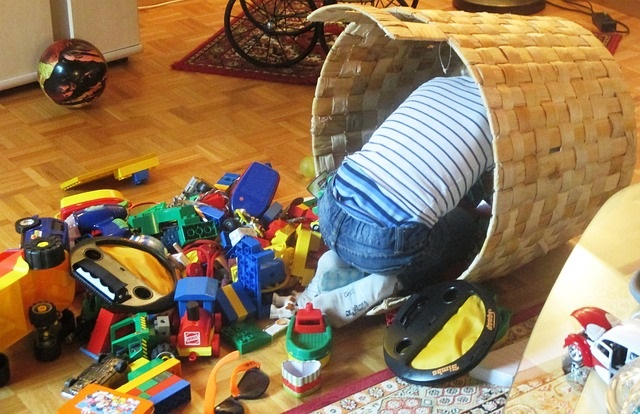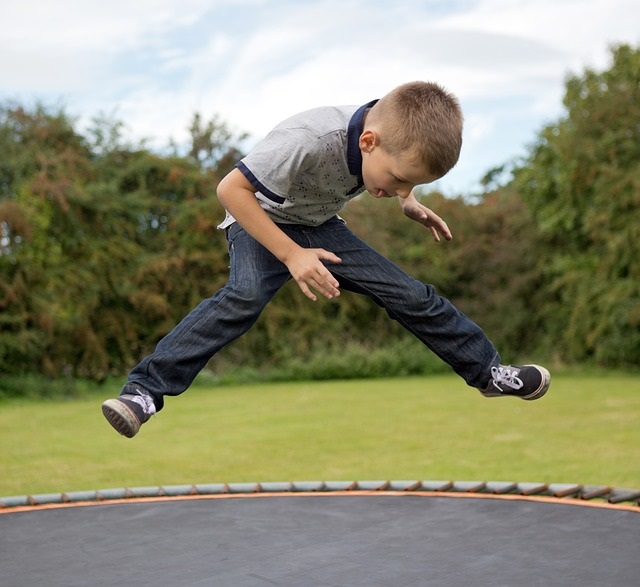This post got a makeover! Dive in and discover all the helpful tips about independent play!

Yesterday I shared how my children asked me not to play with them. After letting go of my pride, I realized that they had given me a huge complement. But in hearing from you in emails and on our ABC Jesus Loves Me Facebook Group, children enjoying independent play doesn’t occur in every home.
Why is Independent Play Important?
Let me remove some the culture pressure you may be feeling. There is more to being a mom than just sitting on the floor playing all day. I have talked several times on this blog about the importance of keeping a clean home, preparing nutritious meals, being a wife, and giving yourself “me” time to refuel. If we are on the floor entertaining our children all day, we are unable to do the mom tasks required each day.
Secondly independent play teaches the child to build his or her imagination. Beyond laying a solid foundation of the Bible and giving my child the gift of work, I believe opening a toddler and preschooler’s world of imagination may be one of the most important aspects that I do as a parent.
When playing, the child learns to think for himself. This is huge for life! It also builds confidence; confidence for failure (to keep trying) and success.

How to Teach Your Child to Play Independently
For a child who has never played by himself, start small and increase as the child develops the imagination and confidence needed.
Here is a scenario:
Jack is three and has never played by himself. He is either watching TV, playing on the computer, or is being entertained by an adult. Mom and Dad see that he needs to learn to play by himself.
Day 1: Mom tells Jack to pick a toy to play with. He chooses trains. Before getting out the trains, mom explains that Jack is a big boy and Mommy needs to make dinner. So, Mommy is going to help him set up a small track and then he is going to play by himself for five minutes, until the timer goes off. When the timer beeps, Mommy will come back and see what he has created. Explain that once the timer is set, Jack is to play quietly and not call for Mommy or come get Mommy. Also explain that the train is the only toy that Jack can play with during this time.
Ideally set up the toy so that you can see him play while you cook but he can’t easily see you. Set the timer and allow Jack to start it. Then leave. Feel free to peak but do not interact with Jack. As soon as the timer goes off, return to Jack and the trains and ask him to show you want he did while you were gone. Praise him for being very patient (a fruit of the Spirit) and creative while you were making dinner.
Continue rotating play and the timer throughout the day.
Day 2: If the child has trouble obeying the rules (not talking or coming to you during the timed amount) continue to work on this. Be firm about the boundaries you created. It may be best to start with less time. You want to help the child be successful.
If the child is ready to length the time, follow the same procedure but increase the time to 10 minutes.
Day 3: Instead of the parent helping the child begin the playtime, help the child get out the toys and then begin the timer. Let the child show you what he has created when the timer beeps.
The key is to return as soon as the time goes off and be consistent about not allowing Jack to interact with you while the timer is clicking down. This is teaching him to respect your time and in reverse that you respect his time by coming back. Teaching him to only play with one toy at a time and for an extended amount of time allows his imagination to grow.
If Jack does not respect you and the rules that you have set up for the time then a discipline situation has occurred and consequences needs to happen.
With time, Jack will learn to entertain himself and play with a set of toys for a longer period of time. (More on this in tomorrow’s post.)

A few pointers:
1. Especially in the training stages, keep little siblings away from the child. Having a toddler get into his toys will force him to interact with you.
2. Pick a toy that will keep the child’s interest for a few minutes. A single car probably wouldn’t help the child be successful like a group of toys (several cars and a floor mat). Our kiddos play by the hours with Legos, Rescue Heroes, cars, trains, and blocks. A toy the child hasn’t seen for a while is even better.
3. If the child becomes frustrated while playing, do not fix the problem. It is in figuring out a solution that learning and confidence builds.
4. Children learn the beginning stages of play by imitating. As a baby, I showed our children how to stack blocks, knock them over, and roll a ball. With our toddler, I help him get started on puzzles by providing him with two pieces that will go together. For my preschooler, I ask questions that gets him thinking about a different way he can design a track. For my elementary little girl, she watches me be Mommy and teacher which she translates to playing with her dolls.
5. Our kids beg for independent play. Literally. The word “bored” has never been said in our home. And that makes me smile. (More on this later this week.)
Independent play doesn’t mean that the parent is uninvolved. Even as I type this post, Little Man is playing in the same room as me with his race cars and a track he created. Every once in a while I hear, “Mommy, watch this!” And I stop, watch, give feedback, and provide him with a great big smile. Sometime I give him praise. Sometimes I provide him with an idea. Sometimes we use it as a teachable moment to talk about physics!
Peanut often brings the little table into the kitchen to work a puzzle while I make supper. Sometimes he needs a little boost so I help him with his next piece. When he gets frustrated and say, “I tan’t to it!” I provide encouragement.
Obviously, as a writer of a preschool curriculum website, I know the extreme value of playing with your child and leading them through teachable moments. But, I also know a child can have too much of a good thing. So, let go of the guilt and pressure. Keep it between the ditches and you will have a well rounded child!
Tomorrow: What’s So Important About Play Stick-to-itiveness


I am a firm believer of free play. My oldest has kindergarten half days. During that time I work with my youngest at home. That's our "organized & structured day". After lunch and a little quiet time, the rest of the afternoon is free play. It's great!
Sounds like a great balance.